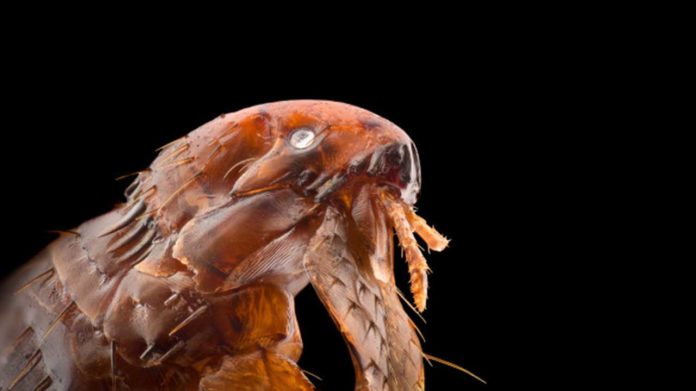Previous studies had suggested a connection between fleas and anatomically unusual groups of scorpionflies, but their exact relationships remained unresolved. The mystery was prolonged because flea genomes underwent a rapid evolution, reconstructing ancient evolutionary relationships challenging.
In a new study by the University of Bristol, scientists examined the largest insect molecular dataset to test all historically proposed hypotheses about fleas’ placement on the insect tree of life and search for new potential relationships. They did this by using new statistical methods and more sophisticated algorithms.
The outcomes suggest that contrary to popular belief, fleas are technically scorpionflies.
Fleas evolved when they started feeding on vertebrates’ blood between the Permian and Jurassic, between 290 and 165 million years ago.
The members of the scorpionfly family Nannochoristidae are the closest living relatives of fleas. Nannochoristidae is a rare group with only seven species native to the southern hemisphere. Unlike the blood-thirsty fleas, adult nannochoristid scorpionflies lead a peaceful existence feeding on nectar.
Lead author and undergraduate student Erik Tihelka from the School of Earth Sciences said, “Of all the parasites in the animal kingdom, fleas hold a pre-eminent position. The Black Death, caused by a flea-transmitted bacterium, was the deadliest pandemic in the recorded history of mankind; it claimed the lives of possibly up to 200 million people in the 14th century.“
“Yet despite their medical significance, the placement of fleas on the tree of life represents one of the most persistent enigmas in the evolution of insects.”
Mattia Giacomelli, a Ph.D. student at the University of Bristol who participated in the study, said, “It seems that the elongate mouthparts that are specialized for nectar-feeding from flowers can become co-opted during the course evolution to enable sucking blood.”
Chenyang Cai, associate professor at the Nanjing Institute of Geology and Palaeontology (NIGP) and a research fellow at the University of Bristol specializing on Mesozoic insects, said, “The new results suggest that we may need to revise our entomology textbooks. Fleas no longer deserve the status of a separate insect order, but should be classified within the scorpionflies.”
“We have exceptionally preserved fossil fleas from the Jurassic and Cretaceous. In particular, some Jurassic fleas from China, about 165 million years old, are truly giant and measure up to two centimeters. They may have fed on dinosaurs, but that isn’t easy to tell. What is more interesting is that these ancient fleas share important characters with modern scorpionflies.”
